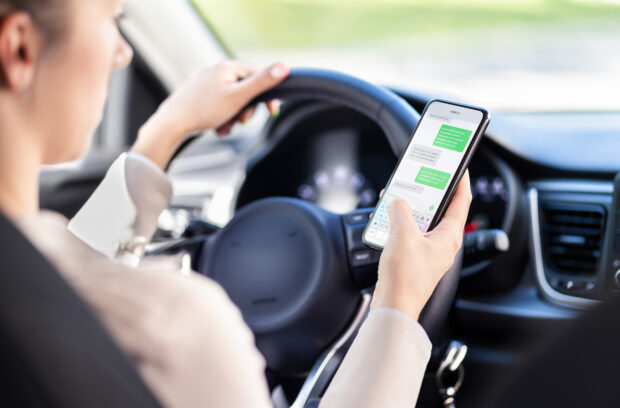Drivers using a cellphone while operating a motor vehicle is the largest contributor to distracted driving in the U.S., according to the latest Issues Brief from the Insurance Information Institute (Triple-I).
“As drivers returned to the roads following the pandemic, distracted driving surged, causing higher rates of accidents, injuries and deaths. This high-risk behavior has worsened in the years since, having huge implications for the insurance industry and their policyholders,” stated Dale Porfilio, chief insurance officer.
In the newly released report, “Distracted Driving: State of the Risk”, the Triple-I examines the effects of distracted driving and how it contributes to more hazardous roadways and a higher combined ratio for personal auto insurers.
The combined ratio for personal auto insurance soared in 2022 to 112.2, “meaning for every dollar the industry cumulatively collected in premiums, insurers paid out approximately $1.12 in claims and expenses.”
The increasing cost of replacement parts, inflation and legal system abuse also contributed to this trend, Triple-I stated.
A total of 2.5 percent of drivers stopped at intersections were talking on hand-held phones at any moment during the day in 2021, according to a 2022 national observational survey from the National Highway Traffic Safety Administration (NHTSA).
Telematics and UBI (usage-based insurance) are technologies that can potentially help insurers—and their policyholders—to better understand a driver’s risk profile and tailor auto insurance rates based on individual driving habits.
An Insurance Research Council survey in 2022 found 45 percent of drivers said they made significant safety-related changes in how they drove after participating in a telematics program. Another 35 percent said they made small changes in their driving behavior.
Policyholders became more comfortable with having their insurer monitor their driving behavior when it resulted in potentially lower insurance costs during the onset of the pandemic.
“If telematics can influence drivers to change behaviors and reduce the number of accidents, the nation’s roadways will be safer and auto insurance can be more affordable,” Porfilio concluded.





















 GM Ends OnStar Driver Safety Program After Privacy Complaints
GM Ends OnStar Driver Safety Program After Privacy Complaints  As Wildfire Risk Grows, States Grapple to Retain Property Insurers
As Wildfire Risk Grows, States Grapple to Retain Property Insurers  New Atlantic Hurricane Forecast Calls for 33 Named Storms
New Atlantic Hurricane Forecast Calls for 33 Named Storms  Allstate Will Insure California Homes Again, Under One Condition
Allstate Will Insure California Homes Again, Under One Condition 